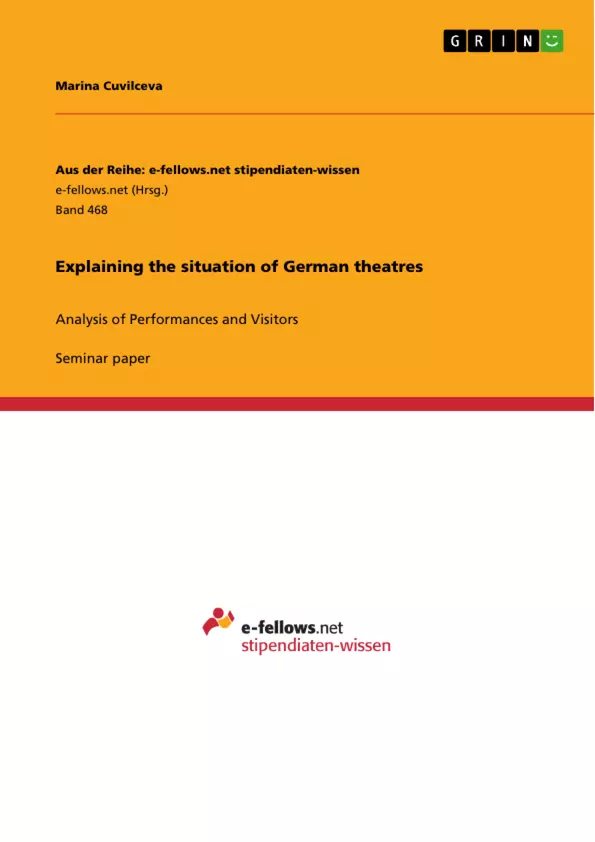This essay will review the information surveyed on current data from Theaterstatistik 2008/2009 collected by Deutscher Bühnenverein. The data that was given there consists of 112 German cities, number of inhabitants in these cities, capacity of theatres, i.e. seats in all
theatres that are available to visitors per 1000 inhabitants in each city. Moreover, there are 146 theatres given with the number of different types of performances produced in that particular theatre as well as the number of visitors presented in two ways: sold tickets to each type of the performance and regarding the type of a ticket.1
The aim of this essay is to summarize data about German theatres as well as to investigate interesting similarities and differences, do mean comparison and discuss the methodology used here.
Inhaltsverzeichnis (Table of Contents)
- Introduction
- Capacity
- Mean comparison
- Capacity
- Minimum and maximum capacity in each group.
- Kruskal-Wallis test of capacity.
- Mean capacity in each group.
- Performances
- Visitors
- Regarding the type of a ticket..
- Regarding the type of a performance.
- Mean comparison for visitors
- Kruskal-Wallis test of opera visitors
- Kruskal-Wallis test of puppet theatres.......
- Methodology.
Zielsetzung und Themenschwerpunkte (Objectives and Key Themes)
This essay aims to analyze data from Theaterstatistik 2008/2009 about German theaters, focusing on their capacity, performance types, and visitor demographics. It aims to compare the data across different city sizes and explore interesting similarities and differences.- Capacity of theaters across different city sizes
- Types of performances offered by German theaters
- Visitor demographics and preferences for different performance types and ticket types
- Methodology used for data analysis and presentation of results
Zusammenfassung der Kapitel (Chapter Summaries)
The introduction outlines the data source and its scope, covering 112 German cities and their theater capacities, performance types, and visitor numbers. It explains the essay's structure, focusing on capacity, performances, visitors, and methodology. The "Capacity" section explores the number of inhabitants in each city and the capacity of their theaters. It categorizes cities into three groups based on population size: large, middle, and small. This section analyzes the minimum and maximum capacity of each group, and utilizes a Kruskal-Wallis test to assess the statistical significance of capacity differences between these groups. The "Performances" chapter focuses on the different types of performances offered by German theaters. It presents data on the quantity of each performance type and compares these numbers across the three city size groups. The "Visitors" chapter dives into visitor data, analyzing the types of tickets purchased and the types of performances preferred. It includes a mean comparison of visitors and employs Kruskal-Wallis tests for opera and puppet theater visitor numbers to identify any significant differences between groups.Schlüsselwörter (Keywords)
This essay examines data on German theaters, focusing on capacity, types of performances, and visitor demographics. Key areas of investigation include city size groups, Kruskal-Wallis tests, and the analysis of various performance and ticket types. It utilizes data from Theaterstatistik 2008/2009, providing insights into the current state of German theaters.- Quote paper
- Marina Cuvilceva (Author), 2011, Explaining the situation of German theatres, Munich, GRIN Verlag, https://www.hausarbeiten.de/document/197208


